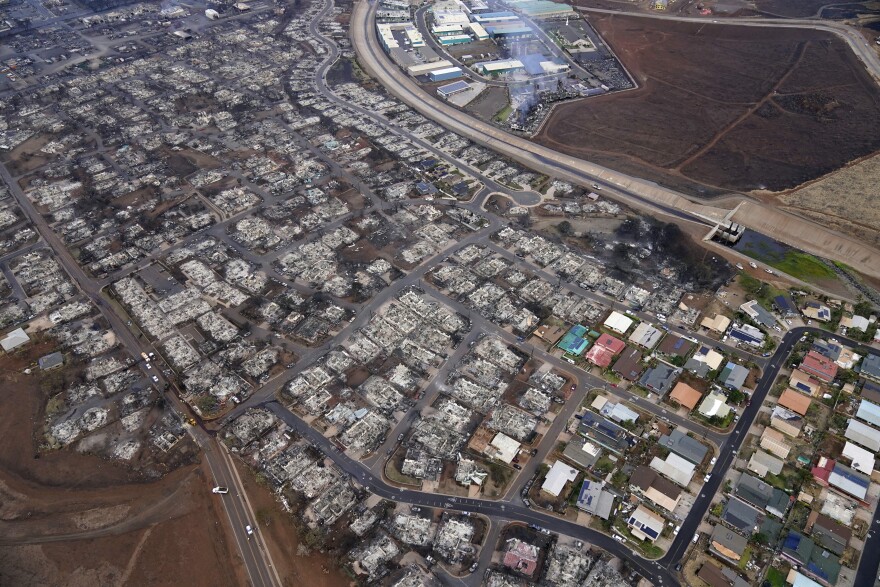A new report on the deadliest U.S. wildfire in a century details steps communities can take to reduce the likelihood that grassland wildfires will turn into urban conflagrations.
The report, from a nonprofit scientific research group backed by insurance companies, examined the ways an Aug. 8, 2023, wildfire destroyed the historic Maui town of Lahaina, killing 102 people.
The Insurance Institute for Business & Home Safety released the executive summary of the report Wednesday. The IBHS researchers found that a multifaceted approach to fire protection — including establishing fuel breaks around a town, using fire-resistant building materials and reducing flammable connections between homes such as wooden fences — can give firefighters valuable time to fight fires and even help stop the spread of flames through a community.
"It's a layered issue. Everyone should work together," said IBHS lead researcher and report author Faraz Hedayati, including government leaders, community groups and individual property owners.
"We can start by hardening homes on the edge of the community, so a fast-moving grass fire never gets the opportunity to become embers" that can ignite other fires, as happened in Lahaina, he said.
Grass fires grow quickly but typically only send embers a few feet in the air and a short distance along the ground, Hedayati said. Burning buildings, however, create large embers with a lot of buoyancy that can travel long distances, he said.
It was building embers, combined with high winds that were buffeting Maui the day of the fire, that allowed the flames in Lahaina to spread in all directions, according to the report. The embers started new spot fires throughout the town. The winds lengthened the flames — allowing them to extend more than 20 feet at times — and bent them toward the ground, where they could ignite vehicles, landscaping and other flammable material.
The size of flames often exceeded the distance between structures, directly igniting homes and buildings downwind, according to the report. The fire grew so hot that the temperature likely surpassed the tolerance of even fire-resistant building materials.
More than 2,100 structures were destroyed in Lahaina, with reconstruction costs estimated at about $5.5 billion according to the report. Still, some homes were left mostly or partly unburned in the midst of the devastation. The researchers used those homes as case studies, examining factors that helped to protect the structures.

One home that survived the fire was surrounded by about 35 feet of short, well-maintained grass and a paved driveway, essentially eliminating any combustible pathway for the flames.
A home nearby was protected in part by a fence. Part of the fence was flammable, and was damaged by the fire, but most of it was made of stone — including the section of the fence that was attached to the house. The stone fence helped to break the fire's path, the report found, preventing the home from catching fire.
Other homes surrounded by defensible spaces and noncombustible fences were not spared, however. In some cases, flying embers from nearby burning homes landed on roofs or siding. In other cases, the fire was burning hot enough that radiant heat from the flames caused nearby building materials to ignite.
"Structure separation — that's the driving factor on many aspects of the risk," said Hedayati.

The researchers found that hardening homes on the edge of a community can help prevent wildland fires from becoming urban fires. Hardening the homes inside a community can help slow or limit the spread of a fire that has already penetrated the wildland-urban interface.
The takeaways? It's all about connections and pathways, according to the report: Does the wildland area surrounding a community connect directly to homes because there isn't a big enough break in vegetation? Are there flammable pathways like wooden fences, sheds or vehicles that allow flames to easily jump from building to building? If the flames do reach a home, is it built out of fire-resistant materials, or out of easily combustible fuels?
For homeowners, making these changes individually can be expensive. But in some cases neighbors can work together, Hedayati said, perhaps splitting the cost to install a stone fence along a shared property line.
"The survival of one or two homes can lead to breaking the chain of conflagration in a community. That is something that is important to reduce exposure," Hedayati said.





